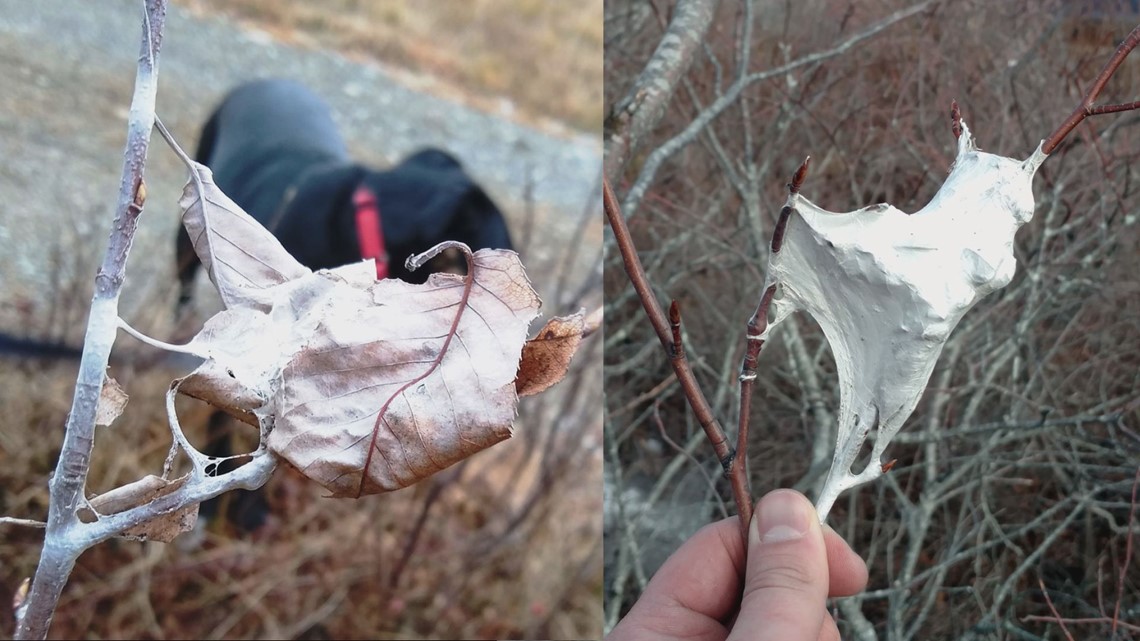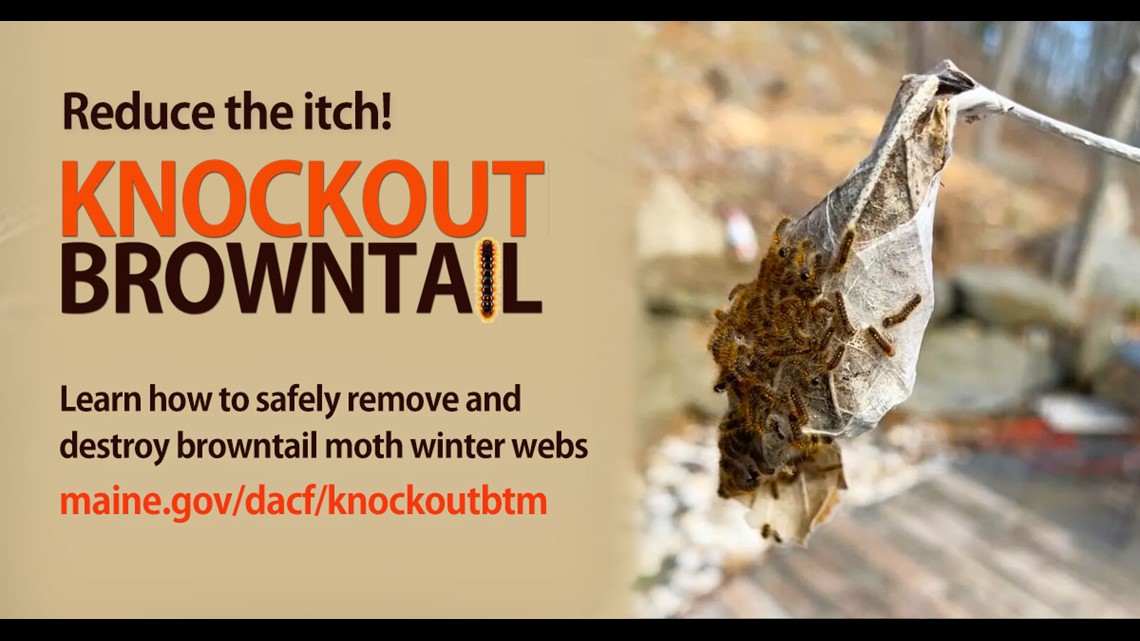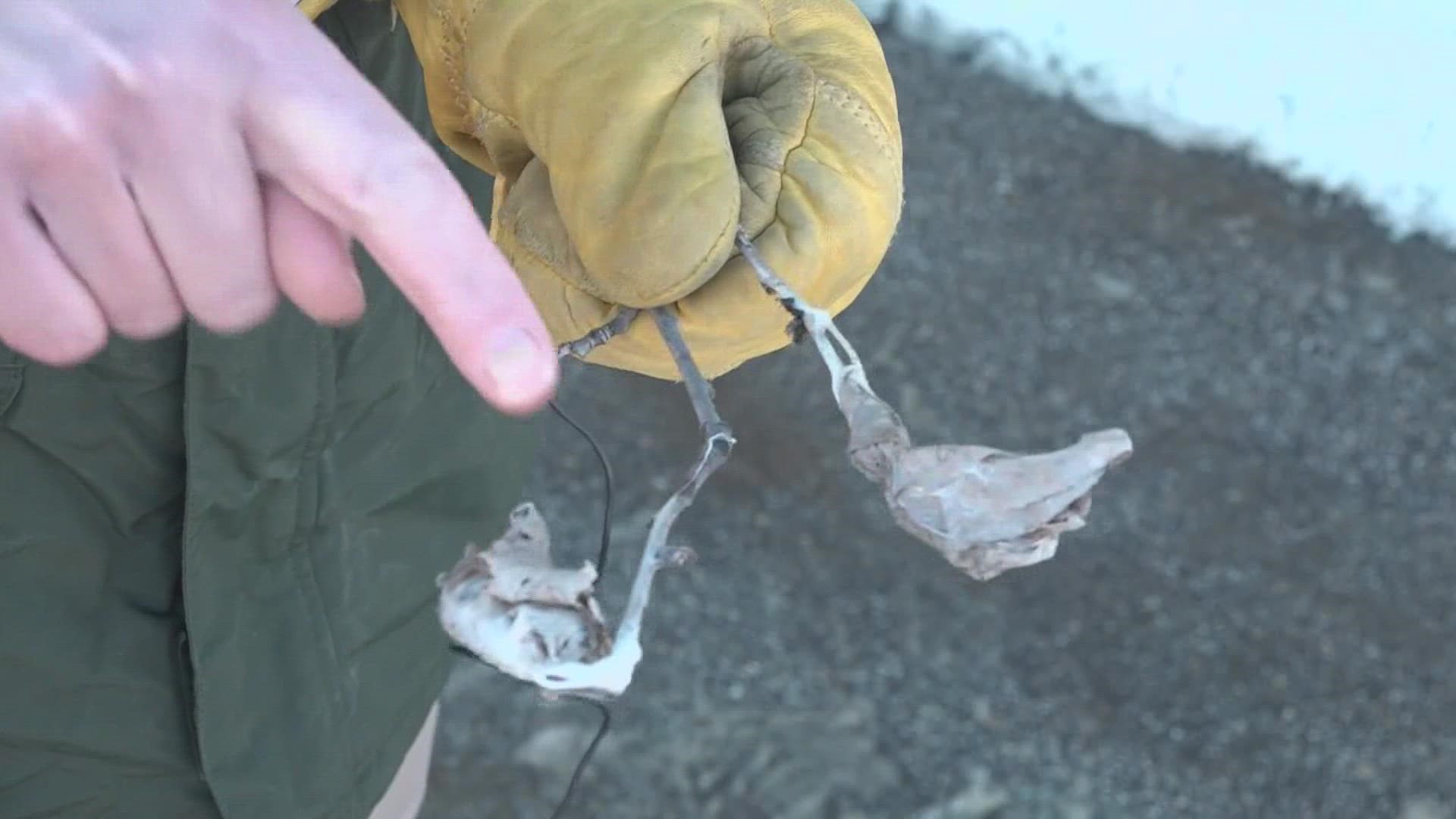MAINE, Maine — For the past few weeks, Bangor city workers have been carefully surveying the city's public roads, looking for browntail moth webs. This week, they will start clipping the moth nests that are visible in trees.
The goal is to eliminate the problem while the insect is dormant rather than wait until they become active. The tiny toxic hairs found on browntail moths are dangerous and poisonous to humans and can cause extremely itchy rashes and even respiratory problems.
After a significant rise in their population throughout most of the state in 2021, Maine Forest Service epidemiologists are urging people to take action now to help make neighborhoods safer for the summer by eliminating browntail moth webs.
"We realized that this is not going to stop anytime soon and it's likely to get worse," said Bangor Public Works Director Aaron Huotari.
After lots of surveying, Bangor city workers are starting to clip the webs on public trees. It's a process Huotari says is necessary and important after dozens of residents reported seeing or having the insects in their neighborhood.
A survey by the Maine Forest Service has also outlined where the insect population is growing in Bangor. Huotari said it is mostly the neighborhoods by the airport.
"It's going to help us target our clipping efforts," said Huotari.


Allison Kanoti is the state entomologist for the Maine Forest Service. She said now through March is the best time to snip webs off trees because the insect inside is dormant.
"We expect to see continued growth in the population. The reason for that is the second consecutive really dry spring, and what helps to bring populations back into manageable levels is some wet weather in the spring period," said Kanoti.
Kanoti said the browntail moth can now be found in every Maine county except York County, so everyone should actively be looking for the webs to safely cut and properly dispose of them.
"At this point, we've seen almost 200,000 acres of damage that's visible from the air across the state, with some of the heaviest damage concentrated around the capital region," said Kanoti, "with scattered populations in basically every county."
"You can soak them in soapy water. You really want to do that for a couple of days to make sure that they are actually suffocated, and then I would recommend actually going the next step of bagging them up and disposing of them," said Kanoti. "Then another alternative is to actually burn them ... I'll put them into my woodstove and burn them up there."
Kanoti said some trees are too high to allow people to clip the webs themselves, so they can hire a professional arborist or pesticide applicator to help do the work on their own trees.
Huotari, arborist David Rice, and many other Bangor city workers have developed a plan and dedicated many hours to try and get rid of as many brown tail moth nests as possible.
"What we are doing is we are mapping them right now," said Rice.
"We'll use those [maps] to target where we are going to start winter web clipping," said Huotari. "There's up to 400 caterpillars in every nest."
"I would recommend that every Mainer take some time and check for webs," added Kanoti.
Rice has worked for the city for more than 30 years. He said this is the first year he and his colleagues are focusing on trying to eliminate a problem that has spiked during the last few years.
"You don't want to come in and do this in the summer when they are active," said Rice.
Kanoti said crews from her department are currently doing the winter web surveys through cities and towns in many parts of the state. The survey portion takes place from now until March to determine the insects' population growth.
"York County was the only county last year where we did not detect webs, and we do expect that they will show up," added Kanoti. "One of the things that we look for is this bright white silk that ties the leaves to the tree."
"There is no pesticides or anything like that, it doesn't hurt the tree and it really can make an impact on how many hatch next year," said Huotari.
It's all part of an effort to avoid very itchy and painful rashes that can last up to 3 weeks for some people, and potential respiratory issues for some people who breathe in the hairs.


You can find more information about the insect, how and when to kill it, and other relevant information at the Maine Forest Service website and by clicking here.

